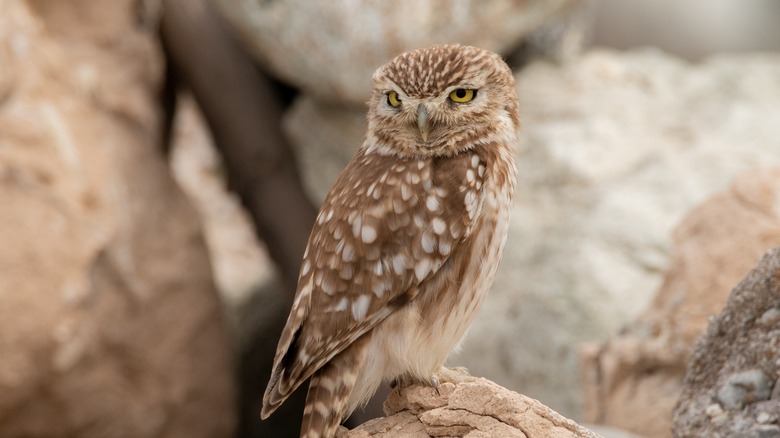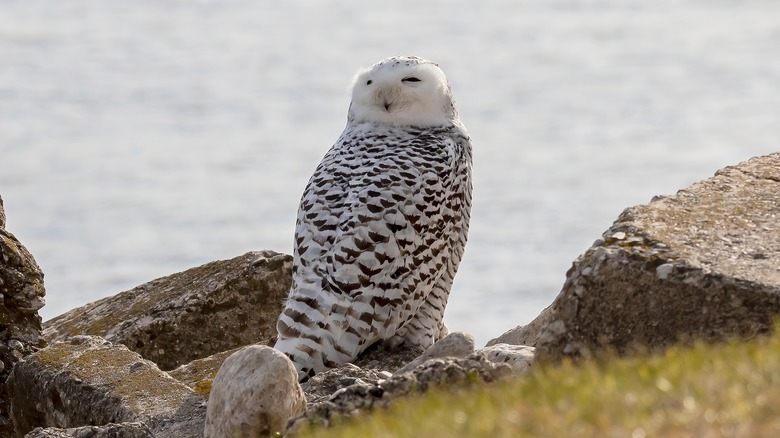How Far Can An Owl Really Turn Their Head?
Owls are known for many things: their keen night vision, their ability to fly silently, the pellets they cough up for kids to poke through in science class, and their incredible range of motion in neck rotation. Humans can turn their necks anywhere from 60 to 90 degrees to either side giving us a range of up to 180 degrees. Owls on the other hand, can turn their heads up to an astonishing 270 degrees (via Science Daily). That's a field of view of 540 degrees!
There are a couple of reasons why owls have evolved this extreme ability. Like all birds, they use their beaks to preen their feathers to stay warm, clean, and healthy. The extreme range of motion helps them to reach all of their feathers (via Journal of Anatomy). It also minimizes body movement when it's scanning its surroundings for something to eat, helping the owl to stay still and silent. And most importantly, owls can't move their eyes. Unlike our spherical-shaped eyes, the eyes of an owl are elongated and fixed in place. So owls need to move their whole head around if they want to look around.
How is this possible?
Why is it that owls can look so far to the right that they end up looking left? If we tried turning our necks past our shoulders we would tear either our carotid or vertebral arteries, leading to a nasty embolism.
The secret lies in a number of adaptations that owls have that we lack, and it all comes down to the circulatory system. One of the arteries that supply the brain with blood is the vertebral artery. On its path up the neck to the brain, it snuggly passes through holes in our vertebrae called transverse foramen. This tight fit between artery and hole means that our arteries are pinched if we turn our necks too far. In owls, however, these holes are 10 times the diameter of the artery, meaning there's plenty of room to move before any damage to the artery can occur (via Journal of Anatomy).
The arteries themselves are also structured differently. Scientists tested the circulation of recently deceased owls by injecting their circulatory system with a dye. They found that as the arteries branched out, they actually increased in size. This is in contrast to human arteries which shrink as they branch out (via ScienceDaily).
So next time you see an owl giving you the stink eye and turning its back on you, don't take offense. It's just showing off its ridiculously impressive circulatory system.

